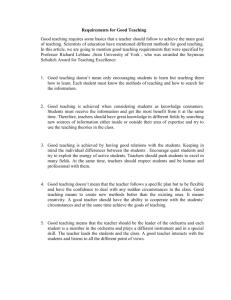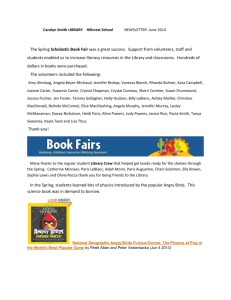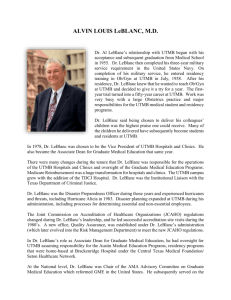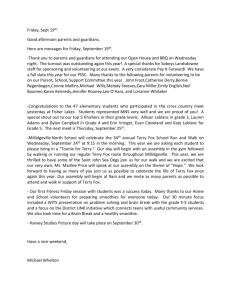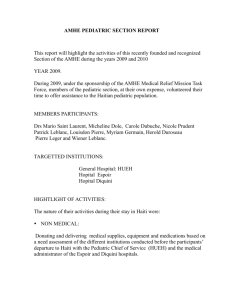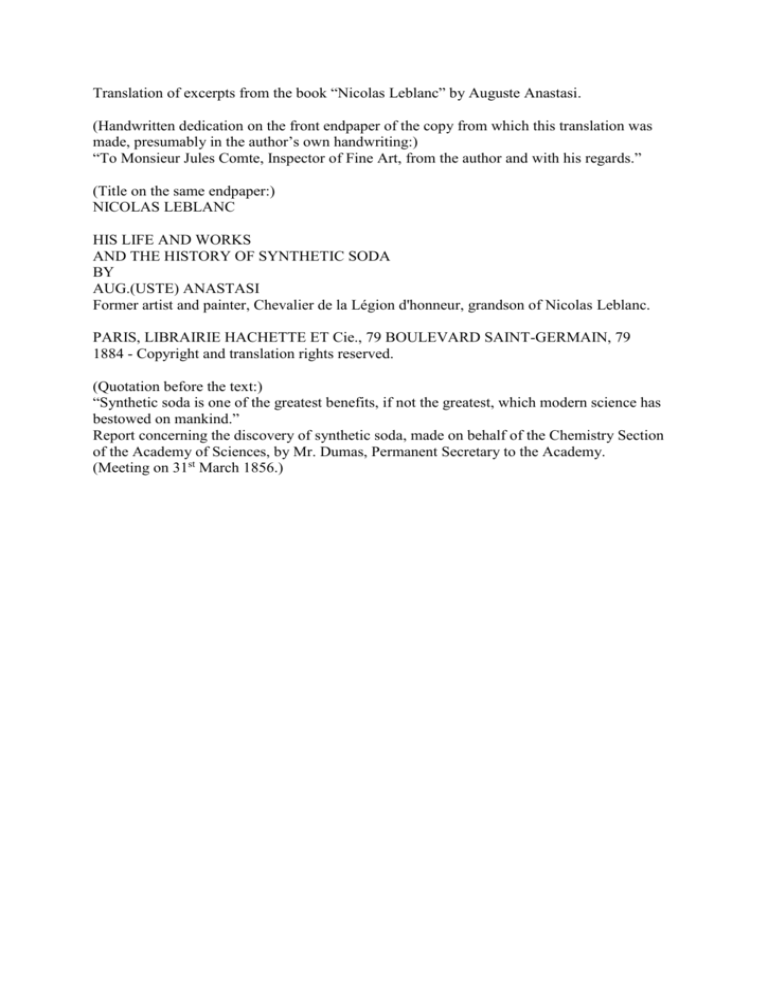
Translation of excerpts from the book “Nicolas Leblanc” by Auguste Anastasi.
(Handwritten dedication on the front endpaper of the copy from which this translation was
made, presumably in the author’s own handwriting:)
“To Monsieur Jules Comte, Inspector of Fine Art, from the author and with his regards.”
(Title on the same endpaper:)
NICOLAS LEBLANC
HIS LIFE AND WORKS
AND THE HISTORY OF SYNTHETIC SODA
BY
AUG.(USTE) ANASTASI
Former artist and painter, Chevalier de la Légion d'honneur, grandson of Nicolas Leblanc.
PARIS, LIBRAIRIE HACHETTE ET Cie., 79 BOULEVARD SAINT-GERMAIN, 79
1884 - Copyright and translation rights reserved.
(Quotation before the text:)
“Synthetic soda is one of the greatest benefits, if not the greatest, which modern science has
bestowed on mankind.”
Report concerning the discovery of synthetic soda, made on behalf of the Chemistry Section
of the Academy of Sciences, by Mr. Dumas, Permanent Secretary to the Academy.
(Meeting on 31st March 1856.)
FOREWORD
Towards the end of 1855, when our first Universal Exhibition ended and when the report by
the General Commission confirmed the results and progress by the industries based on
synthetic soda and which use large quantities of it, the descendants of Nicolas Leblanc
addressed to the Emperor1 a petition aimed at obtaining compensation for the wrongs done to
their grandfather, the inventor of the process for obtaining soda from sea salt (sodium
chloride), as a consequence of the disclosure of the patent for his invention and the
confiscation of his factory carried out in 1794 on the orders of the National Convention2.
This petition was immediately sent to the Academy of Sciences with a request to the
Academy asking it to express its opinion on the legitimacy of this complaint. Although for
more than sixty years the manufacture of synthetic soda had been carried out, both in France
and in other countries, solely and exclusively by the Leblanc processes, only a few tentative
objections had emerged on the subject of the inventor’s rights; but the Chemistry Section of
the Academy of Sciences, acting through its spokesman, the distinguished chemist Mr.
Dumas, refuted these claims very quickly and declared openly and irrevocably, with
supporting evidence, that the process for the manufacture of synthetic soda belonged wholly,
entirely and incontestably to Nicolas Leblanc.
The repercussions at that time (1856) were very great; the Academy’s great decisiveness
brought the matter back to the public’s attention and reawakened sympathies for this useful
man, who had endowed his country with such an important and productive discovery and
whose only reward had been poverty and misfortune.
However, the trend of opinion that was generated brought about national recognition with the
idea of giving to Leblanc’s memory an expression of gratitude from his country.
Paris named one of its roads after him; Marseilles and Lille planned to put a bust of him on
one of their buildings.
A few years afterwards, the latter town named one of its great thoroughfares after him.
Leblanc’s name was also honoured outside France, where his processes, used to the exclusion
of all others, were highly respected and were very profitable to the industries of various
nations.
The former province of Berry, from which Leblanc originated, was not slow in also wanting
to honour the memory of one of its own people; several companies were already engaged in
implementing this project; various circumstances have caused them to postpone them; let us
hope they have not been abandoned.
On 22nd July last year the Academy of Sciences was informed by its permanent secretary, the
well-known Mr. Dumas, that a subscription committee had just been formed for the purpose
of erecting a statue to the chemist Leblanc, and, after recalling in a few eloquent words the
entitlements of the inventor of synthetic soda to receive national recognition, in conjunction
with general feelings urging the completion of a project already delayed too long, a
Translator’s note: The “Emperor” at that time was Napoleon III, nephew of Napoleon I (Napoleon Bonaparte).
Translator’s note: The “National Convention” (1792 – 1795) was the assembly that governed France for the
part of the French Revolution known as the “Reign of Terror”. The Revolution itself lasted from 1789 – 1799.
1
2
committee of honour was immediately formed in the Academy of Sciences, presided over by
Mr. Dumas and consisting of Messrs. Wurts, Friedel, Frémy, Pelligot, Pasteur, de Lesseps,
Frédéric Passy, Levasseur, Boussingault, Jamin and Hervé-Mangon.
The subscription list that was immediately opened had the honour of seeing, as the first name
entered in it, that of its honourable and most senior member, the eminent Mr. Chevreul.
We may add in passing that already in 1856 when a similar project had come into being, the
renowned chemist Baron Thénard who liked to recall that in his youth, when he was growing
up in Fourcroy, he had met Nicolas Leblanc on a number of occasions; Baron Thénard who
also appreciated the value of the invention of synthetic soda, claimed for himself the honour
of putting his name at the top of the list of subscribers at that time.
One of the duties of France at the present time is to follow the generous spirit of the greatest
names in contemporary science by joining in this expression of recognition for the creator of
the manufacture of synthetic soda, a belated tribute to one of the most useful men of this
century.
The name of Nicolas Leblanc, although it is so well known and so esteemed in France and
abroad by all those involved in science and industry, has not achieved among the general
public the popularity to which his works and the immense usefulness of his discovery entitle
him.
All that has been published up to now are a few biographical notes, very concise and
necessarily incomplete. Wishing to acquaint our contemporaries with our grandfather’s life
and works, we have compiled the most accurate documents that we were able to find, and we
have attempted to retrace here the history of his life and works.
However, before starting our work, we feel obliged to correct one serious error that has
gained ground for nearly thirty years about the place and date of Nicolas Leblanc’s birth; the
explanations that we shall record here will clear up all the doubts and will explain why these
errors were not put right sooner.
In 1806, after the death of Nicolas Leblanc3, all his papers remained in the hands of his
widow, who afterwards gave them to elder of his two sons, César-Nicolas Leblanc, born in
1787, who was later appointed Professor of Machine Design at the Conservatoire of Arts and
Sciences, curator of that establishment’s collections and Chevalier de la Légion d’Honneur.
César-Nicolas Leblanc died in November 1835; after his death the papers originating from
his father remained in the possession of the widow Madame Leblanc, her husband’s heiress
and guardian of his two infant daughters.
Translator’s note: As described later in the book, the French Revolution seized the plant and manufacturing
business and disclosed Leblanc’s hitherto secret process in 1794. Although Napoleon I returned the plant to
Leblanc in 1801, the seizure of his other assets meant he had insufficient funds for successful commercial
operation in competition with others who had benefited from the disclosure of his process. Nicolas Leblanc
committed suicide by shooting himself in the head with a pistol on 16 th January 1806 after hearing on 8th
November 1805 the decision by the “arbitres” (government arbitration tribunal) that he was to receive only
52,473 Francs compensation, which meant he was effectively ruined.
3
In 1855, when involved in reclaiming for Leblanc the title of sole inventor of synthetic soda,
which some jealous people were attempting to contest, these papers were found to include the
documentary evidence which the eminent chemist Mr. Dumas had used to establish beyond
doubt in his report to the Academy of Sciences on 31 March 1856 that the invention of
synthetic soda belonged exclusively to Leblanc.
This point, which was established and was from now on beyond and dispute, brought
Leblanc’s name back into public attention and gave rise to various articles in scientific
journals and reviews as well as several biographical notes about this useful man. The
authentic documents about the place of birth of Nicolas Leblanc and his age were completely
missing; only a few family souvenirs were capable of acting as a guide in the search.
These souvenirs were based only on the memory of a few people still alive.
All that was known was that Nicolas Leblanc was from Berry4, that his father had been
foreman at the Ivoy-le-Pré ironworks and that Nicolas Leblanc may have lived at Issoudun5
in his youth. Was he born there? It was believable but not certain.
All that was uncovered in the Issoudun archives by the searches then carried out by the
person in charge of the compensation claims was a document dated 1753 in the name of
Jacques-Nicolas Blanc, a document in total disagreement with the genuine documents, and
she accepted this as Leblanc’s registration document without any checks and without any
other investigations.
Twenty-eight years have passed since the publication of his false birth certificate, which was
accepted uncontested by the attorney and custodian of Leblanc’s papers, even though he had
in his hands more accurate documents which, although they could not establish definitively
Leblanc’s place and date of birth, were at least enough to refuse to accept the information
mentioned above as being genuine and referring to Leblanc. As a consequence of family
disagreements unconnected with any of this, I have remained for almost thirty years
completely out of contact with those who are, like me and to the same degree, Leblanc’s
descendants. Not until June this year (1883), when I wanted to write my grandfather’s life,
did I approach members of my family to obtain information about these papers and to
research the components of a complete description of his life and works. I was struck by the
strange disagreement between the genuine documents and those which, for reasons unknown
to me, had been so unthinkingly accepted; in fact the death certificate of the inventor of
synthetic soda, drawn up at Saint-Denis (Seine) on 20th January 1806, reads:
“Nicolas Leblanc died at Saint-Denis at his home, Maison de Seine, on 16th January 1806 at
the age of sixty-three years. Thus, if Nicolas Leblanc was sixty-three when he died in 1806,
he must have been born in 1742 or 1743 and not in 1753. Apart from the error in the date,
there is also mistakes in his name; firstly the forename Jacques, which is not found in any
registration document, and the name Blanc, which was never that of our grandfather.
Leblanc’s other papers also provided more certain evidence to guide us in our researches.
In a philosophical note written in his handwriting in 1805 he says: “I am sixty-two years old”.
4
5
Translator’s note: Berry is a district in the south of the Paris basin.
Translator’s note: Issoudun is a town in the Berry region.
In a draft memorandum to the Emperor of Russia in the same year 1805, again in his own
hand, he writes: “I am sixty-two years old; I have been married for more than thirty years; I
have two sons, one is aged seventeen and the other fourteen.” Thus his age shows us that his
date of birth must be 1742 or 1743. The ages of his sons agrees well with their birth dates of
1787 and 1791, and as far as his marriage is concerned, counting back more than thirty years
brings us to 1775, a date agreeing perfectly with the birth of his eldest daughter (1779).
The Issoudun document mentioned the marriage of Nicolas Leblanc and Marie Coulon, in
fact we have the original document of emancipation6 of his two daughters dated 2 Prairial
Year II7 (July 1794), which says: “Before us etc., there appeared Nicolas Leblanc, National
Gunpowder Agent8, residing at the Arsenal, and his wife Marie-Françoise Charpentier, born
at Juziers (Seine-et-Oise).” Leblanc’s death certificate also repeats “husband of MarieFrançoise Charpentier” and the emancipation document was also signed by Charpentier, his
brother-in-law.
Finally, the report of the Board of Guardians (20th January 1806) contains the following:
“Before us, Magistrate of Saint-Denis, there appeared Marie-Françoise Charpentier, widow
of Nicolas Leblanc, died on 16th of the said month.”
We may also add by way of information that, in a brochure on crystallisation technology
written by Leblanc and published in 1802, he says: “I have lived in Paris for more than forty
years”, which takes us back to 1760. Thus if Leblanc was born in 1753, he would have started
living in Paris at the age of seven. In fact he was only seventeen when he came to Paris to
study medicine, then he had already gained a master’s degree in surgery before 1780; in
addition Nicolas Leblanc had a younger brother, a warrant officer at Belfort who died in that
town in 1812.
After consulting all these documents, it was pointless to waste any more time on the Issoudun
document, which was nothing more than an error or a confusion.
We then decided to rediscover the truth with the aid of some genuine information that might
act as a starting point. First of all we approached the Defence Minster to obtain the military
service records of the brother of Nicolas Leblanc, in which we hoped to find his place and
date of birth. In fact Nicolas Leblanc’s brother was born at Ivoy-le-Pré (Cher) on 19th
February 1745.
This valuable document became the key to our research; our expectations had not misled us.
We made a search in the registry office documents of Ivoy-le-Pré where, after checking
Leblanc’s brother’s birth certificate, we had the satisfaction of retrieving that of the inventor
of synthetic soda. The document reads as follows:
Translator’s note: Emancipation is a legal process by which a young person below the age of majority is
granted the status of a person above the age of majority. A young woman might also gain this status through
marriage.
7
Translator’s note: This is a date according to the calendar introduced by the revolutionary government during
the French Revolution. It was soon abandoned (in 1805).
8
Translator’s note: A department of the French government, the “Administration des Poudres et Salpêtres”, had
a national monopoly on gunpowder.
6
“Extract from the Register of Births, Marriages and Deaths of the town of Ivoy-le-Pré, district
of La Chapelle-d’Angillon (Cher), for the year 1742.
ARRONDISSEMENT of SANCERRE
District of La Chapelle-d’Angillon.
(5619)
Birth of Leblanc (Nicolas), 6th December 1742.
“In the year one thousand seven hundred and forty two, on 6th December, I the undersigned
parish priest baptised Nicolas, born this day, son of Mr. Nicolas Leblanc, foundry-worker,
and Marie Berthin his wife. The godfather, Agnan Berthin, uncle, the godmother, MarieJeanne Pineau, first cousin of the child, from the parish of Henrichemont, who declared their
inability to sign.
“Signed at the Registry Office: BERTHIN and GUICHARD, parish priest.
“For the accuracy of the record:
“Ivoy-le-Pré, 12th October 1883.
“For the Mayor,
“The First Deputy,
“CANTIN-CHEVALLIER.
“Seen by us, Magistrate of the District of La Chapelle-d’Angillon, arrondissement of
Sancerre (Cher), authenticating the signature of Mr. Cantin-Chevallier, deputy mayor of the
town of Ivoy-le-Pré, affixed hereto.
“La Chapelle-d’Angillon, 13th October 1883.”
We need not go to any further lengths to establish the authenticity of this document.
Furthermore, it is thirty years since the registry archives of Paris were last destroyed, and if
one had carried on to in-depth searches there would have been no lack of documentary
evidence, since Nicolas Leblanc had lived in Paris since 1759 or 1760, - this is established
conclusively not only by what we said above but also by documents covering a period from
1760 to 1806, the year of his death.
These documents are: a receipt for ‘right of chapel’9 at the College of Surgeons, 1786,
signed: SUE; - receipts for the poll tax and compulsory tax from 1780 to 1792; - appointment
as administrator of the Departement of La Seine; - minutes of the election by the Department
of La Seine, District of Saint-Denis, as a member of the Council of Elders10 (Year VI, 1798);
we have all these documents either as originals in our own possession or as reports in the
National Archives, Box B, Bundles 15 and 17, and the Box of the Political Assemblies.
Furthermore, having completed our work, we believe it is our duty both for ourselves and for
our grandfather’s memory, to deposit in the archives of the Academy of Science the
documents we have collected and which relate to the inventor of synthetic soda.
Translator’s note: ‘Right of chapel’ was the grant of religious freedom, i.e. for the person concerned to belong
to his/her preferred church, and was important before the advent of general religious tolerance.
10
Translator’s note: The ‘Council of Elders’ was the upper house of the French parliament during part of the
French Revolution.
9
We also believe we ought to add, and this is important, that in the course of this work, and
despite the fact that the eminent Permanent Secretary of the Academy of Sciences, Mr.
Dumas, in the reports he made to the Academy about Leblanc and synthetic soda, always
wrote Leblanc’s name in two words: “Le Blanc”; and although Leblanc’s eldest son and his
descendants adopted this way of writing their name, we have never found it justified either by
any of the registry office records or by any of Leblanc’s numerous handwritten signatures;
that we have never found his name written in two words in Leblanc’s printed works
published by himself; and furthermore that in a printed note about his work on crystal
technology, pages 71 and 72, he says: “I lived in Saint-Denis during 1791 and 1792; I have
lived in Paris for more than forty years. I make this remark because there is a numerous
Leblanc family in Saint-Denis; and the father of this family, who by the way deserves and
enjoys public respect, is the same age as myself and has the same first name as me, and his
signature is absolutely like mine; which has already caused several misunderstandings.
For these reasons we believed that we ought to restore to Leblanc’s name the spelling he
himself adopted and which is moreover justified by his many signatures and by the register
office records. Thus we always write his name like this: “Leblanc”.
THE GRANDSON OF NICOLAS LEBLANC
Our publication was being printed when the sad news arrived of the death of the
distinguished scholar Mr. Dumas; such a great and regrettable loss will be keenly felt, not
only in the scientific world but also among all those who have an appreciation for our
country’s distinguished men.
If the name of Nicolas Leblanc is held in esteem today, it owes to the great authority of the
words of the eminent Mr. Dumas the very great dedication with which his memory has been
honoured by modern science.
No-one has contributed more than he to this memory or has done greater justice to the
importance of Leblanc’s works.
Although we have on many occasions in this book had occasion to express our profound
gratitude to the eminent chemist, we think it is our duty to express them once again at this
point, adding our regrets that we were not able to present to him this work, to whose
sentiments he would certainly have given his approval.
April 1884.
NICOLAS LEBLANC
I
Place and date of Leblanc’s birth. – His family. – Leblanc at Bourges. – Initial studies. –
Arrival at Paris, 1759. – His companions. – Leblanc studies chemistry under Darcet. – His
friends. – Leblanc Master of Surgery. – Leblanc marries, 1776. – Birth of his daughter, 1779.
– Leblanc is house surgeon to the Duke of Orleans, 1780. – Leblanc’s poverty. – First paper
to the Academy of Sciences on Crystallisation, 1786. – Approval by the Academy. – Second
paper to the Academy on cubic alum and cobalt vitriol (cobalt sulphate). – Laudatory report.
– Research into the spontaneous combustion of coal. – Approval by Darcet. – Leblanc’s
recognition. – New paper on the crystallisation of salts, 1788. – Synthetic soda. – Initial
studies, 1784. – Malherbe senior. – La Métherie11. – Prize of twelve thousand Livres
proposed by the Academy. – Sealed deposit of Leblanc’s process, 1790. – The Leblanc
process. – Foundation of the manufacture of soda, 1791. – Articles of Association. – Darcet’s
certificate. – Foreign sodas. – Grant of the Patent of Invention, 1791. – Manufacture at SaintDenis. – The Maison de Seine. – The Revolutionary period. – The Committee of Public
Safety. – Appeal to inventors. – Secret patents. – The report by Darcet, Desmarets and De
Servières. – Shée’s letter. – Death of the Duke of Orleans. – Confiscation of the
manufacturing business. – Publication of the Leblanc process. – Report by citizens Lelièvre,
Pelletier, Darcet and Giraud. – Fanciful explanations. – The Franciade manufacturing
operation. – Promised compensation. – Work suspended. – Leblanc is expelled. – Complete
ruin.
Translator’s note: La Métherie was another French chemist who made, may have made or claimed to have
made a contribution to the discovery of the Leblanc soda process.
11


